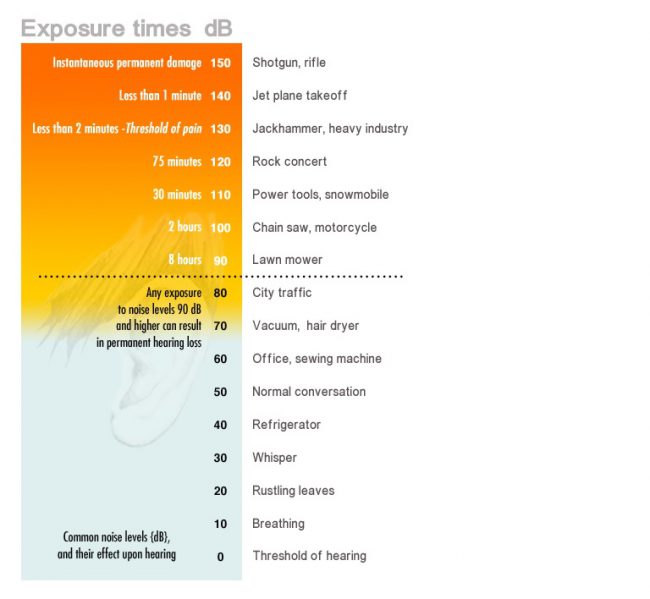How Loud is Too Loud?
By Sandra Bouranova, B.A., M.Sc., Reg. CASLPO
Traffic. Music concerts. Construction.
Our world is filled with loud and extreme noise. Every day, we are exposed to sounds in our environment, some a lot louder than others. Unless we work around loud construction, factories or firearms, most of the sounds we are exposed to are at safe levels that will not cause damage to our ears. However, certain noises in our environment can lead to Noise-Induced Hearing Loss (NIHL). It doesn’t necessarily happen right away, and it could take years to kick in.
To understand how loud noises can affect our ears, it’s important to know how we hear noises in the first place. Sound enters our ear canals as small vibrations in the air. It is the job of our ears to turn these sound waves into something we can hear and perceive. The vibrations cause three tiny bones in our middle ear to move, and send vibrations to the fluid-filled cochlea in the inner ear, where hair cells line the partition of the cochlea, the basilar membrane. These hair cells move in conjunction with the fluid vibrations, and open up to allow electrical signals to be sent down to the auditory nerve. The brain receives this signal, and is able to perceive it as sound.
When we are exposed to a very loud noise, several things can happen:
- Temporary hearing loss can occur, whereby our hearing thresholds decrease for a couple of days. This is the muffled noise you experience the morning after a rock concert. This temporary damage can yield lingering hearing damage long-term.
- Ringing/beeping/buzzing sounds in our ears can occur; this is called tinnitus.
- The hair cells can become permanently damaged, and eventually die out, which is the cause of noise-induced hearing loss.
We might not notice this damage right away, because it is normally gradual. Sounds become fuzzy and lose their sharpness, and the clarity and understanding of words gradually decrease.
The question is, at which volume do sounds become unsafe?
Sound is measured in decibels (dB). How many dB is a safe level, and how long are we able to allow exposure of our ears to this sound without incurring permanent damage to our ears?

The graph to the right depicts loudness levels of common sounds, and how long we are able to hear them before it becomes unsafe.
Wearing hearing protection such as earplugs increases the time that can be spent around these loud sounds. Protect your ears now, and your ears won’t suffer the consequences later.
Sandra Bouranova is an Audiologist registered with CASLPO and she sees patients at our Hearing Solutions in the Centerpoint Mall.









